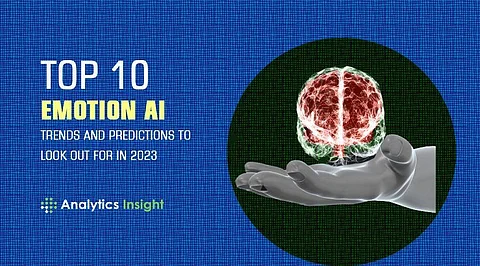
- Insights
- Cryptocurrencies
- Stocks
- White Papers
- Industry
- Geography
- Insights
- Cryptocurrencies
- Stocks
- White Papers
- Industry
- Geography


One of the present trends is Emotional Artificial Intelligence. This technology has extensive potential to build better human-machine interactions and can be used in different industries and sectors. Emotional AI uses machine learning to monitor, analyze, interpret, record, and even, in some cases, predict human emotions. Over the last decade, artificial intelligence has traveled from a buzzword to a must-have business competence. But the attempt to use AI to address and respond to emotion, or Emotion AI, is not an unseen concept — and as political and social pressures continue to push tech companies to account for a wider range of human experiences, the Emotion AI trends will become an increasing priority. A wide range of businesses and startups are implementing Emotion AI trends and predictions to grow their business and this has heightened a significant increase in the Emotion AI market. The global Emotion AI market is projected to grow from US$22.3 billion in 2021 to US$49.6 billion by 2030, at a Compound Annual Growth Rate (CAGR) of 12.1% during the forecast period. Here are the top 10 Emotion AI trends and predictions for 2023.
Emotion AI vendors have moved into completely new areas and guiding enterprises to create a better customer experience and unlock real cost savings. These include:
Collaboration of Emotion AI technology vendors and surveillance camera providers. Cameras in public places in the United Arabic Emirates are being used to detect people's facial expressions and, then, understand the general mood of the population. This project was instigated by the country's Ministry of Happiness. This is listed among the top 10 Emotion AI trend and prediction.
Skyscanner, a metasearch engine and travel agency, uses Sightcorp's emotion AI technology for their Russian website. Sightcorp's face analysis tool uses emotion AI to anonymously detect and measure facial expressions like happiness, sadness, disgust, surprise, anger, and fear. Skyscanner used this technology to create an engaging experience with its customers.
Video games are created to encourage a large set of emotions in gamers, with these reactions frequently being clues to enjoy the entire game. With the help of computer vision, the game console/video game identifies emotions through facial expressions during the game and adapts to them.
Emotion AI software can help doctors with the diagnosis of diseases such as depression and dementia by using voice analysis. During the Covid pandemic, many humans have demonstrated signs of distress because of the emotional toll that appeared in the crisis. This is among the top Emotion AI trends and predictions for 2023.
Learning software prototypes have been using Emotion AI to adapt to kids' emotions. When the child shows frustration because a task is too difficult or simple, the program learns the task to make it less or more challenging. Another learning system helps autistic children recognize other people's emotions.
According to Gartner client inquiries, demand for employee safety solutions is on the rise. Emotion AI can be useful to analyze the stress and anxiety levels of employees who have very demanding jobs such as first responders.
A 'nurse bot' not only reminds older patients on long-term medical programs to take their medication but also converses with them every day to monitor their overall well-being. The bot listens to their problems, helps them to express their emotions, and never lets them feel lonely.
A VPA-enabled speaker uses emotion AI to recognize the mood of the person interacting with it and respond accordingly.
Automotive vendors are using Emotion AI technology to monitor the driver's emotional state. the interior of present cars will have many sensors, including cameras and microphones, to monitor what is happening and to understand how users view the driving experience. An extreme emotional state or drowsiness could trigger an alert for the driver. This could be very useful to minimize road accidents.
Insurance companies are using voice analysis to detect whether a customer is telling the truth when submitting a claim. According to independent surveys, up to 30% of users have admitted to lying to their car insurance company to gain coverage.
